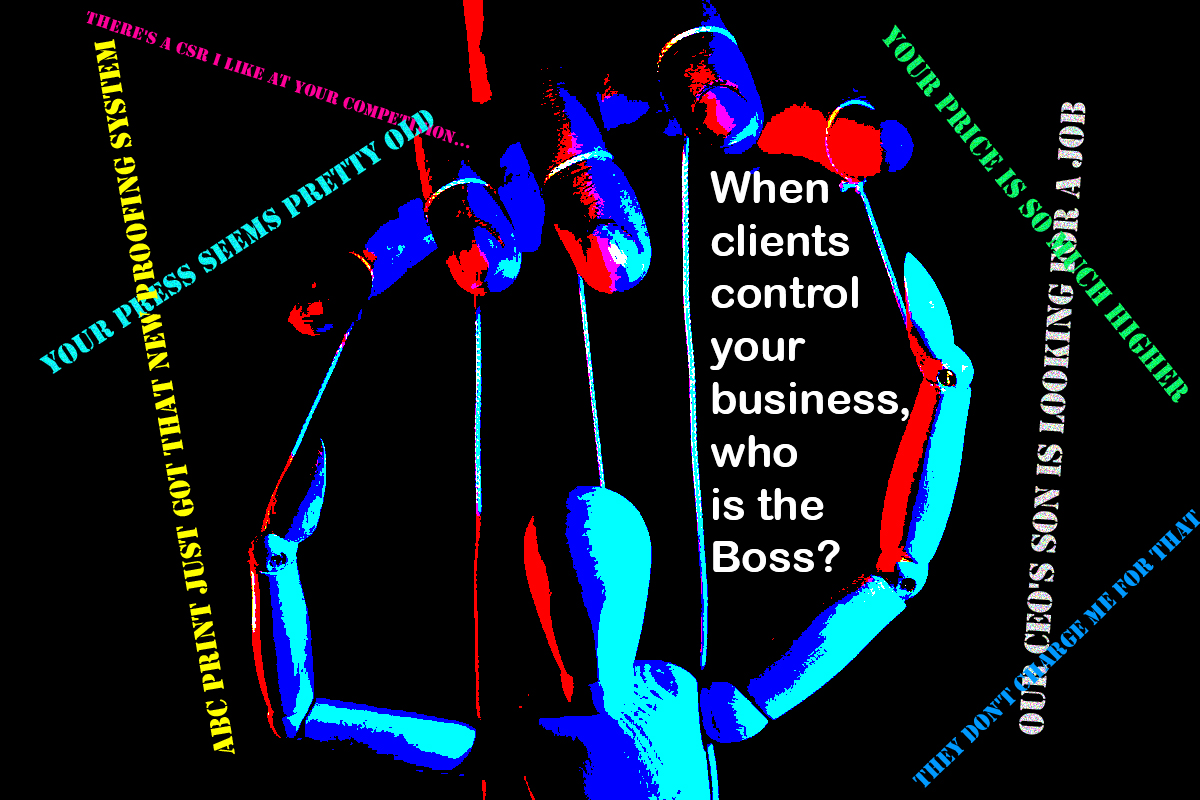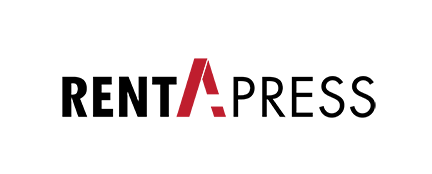The risks of a client base that is too narrow, driven by too few of your clients, are issues of concern. In these cases, the client is grooming you. Everyone has worked someplace where 2 or 3 clients rule the roost. All production scheduling, capital equipment selection and staffing center around their needs. It’s great to have major clients, but the risk of losing them after gearing your operation to their needs can put a business in a world of hurt.
We know the world, we know print, we know marketing.

Are You Controlling Your Client Base, or is it Controlling You?
When the clients have too much control, business suffers
The risks of a client base that is too narrow, driven by too few of your clients, are issues of concern. In these cases, the client is grooming you. Everyone has worked someplace where 2 or 3 clients rule the roost. All production scheduling, capital equipment selection and staffing center around their needs. It’s great to have major clients, but the risk of losing them after gearing your operation to their needs can put a business in a world of hurt.
Because nothing stays the same, a balanced client base is best. Things can change without warning. A key salesperson will leave and take a client with them. A company goes out of business; moves to another region; or has different needs due to a pandemic…all things every printer can and should have a prepared response.
Risks of overspecializing
Unless you have significant trade shop relationships, over-specializing is dangerous. This results in a client base that provides too narrow a range of work. If something disrupts that work such as an innovation in technology, there are no other revenue streams to bolster gross income. While specializing can deliver efficiencies in cost, it often creates a more brittle workflow: variations in client work may need alterations to meet the workflow specifications, thereby generating additional cost. Automation is a benefit of specializing, with over-automating being the risk.
Production geared to too few clients
In an honest effort to better serve clients who make up a high percentage of the revenue, decisions on capital equipment purchases are often influenced by one client’s specific needs. Choosing equipment that is efficient for a specific type of work may boost profits for a given client but can be ill-suited to deliver efficiencies to other clients’ work.
Custom versus Commodity
Many print products lend themselves to more fully automated workflows for numerous marketing needs. Supporting both custom and commodity levels requires superior management, especially through how these services are marketed AND sold. A ‘smart’ sales strategy is the engine that will differentiate one print service from another. Without the right sales staff, any business is doomed. With the right sales staff, success is achievable.
Dependency on small segment of active client base
With a large client base a business is still exposed to risk when attention is focused on the biggest spenders. Smaller clients find it difficult to get the attention they need and sending their business to you can make them feel less important. This cycle also impacts the sales force. It then becomes harder to bring in new clients because there are not enough additional resources to properly serve them. Providing a range of services and using segmented sales channels are the best ways to broaden your client base. Aligning with other shops that have an attractive product portfolio usually have capacity you can buy into. Less iron on your floor, lower monthly payment. If sales of an outsourced product increase, then its time to consider a capital expense. Always monitor. Always assess.
What it takes
Make sure you have a broad base of clients, large and small. Seasonal clients that create spikes of work need to be balanced by other revenue streams. E-commerce that uses a web-to-print solution is one way to balance the seasonal valleys between spikes. Designing workflows that are flexible enough to accommodate different kinds of products broadens your appeal to more markets. Finally, augmenting your in-house sales staff with broker relationships, reducing the cost-of-sale, can help achieve this balance.
These strategies help ensure you will not suffer too much when a major client flies the coop.

